
Airlines seem to have a reputation these days for squeezing as many seats into airframes as they can get away with.
While many low-cost carriers offer minimal legroom, some also have particularly narrow seats. Possibly the tightest configuration I’ve come across is the 3-3-3 Economy seating on the Airbus A330s of AirAsia X and Cebu Pacific. All other Airbus A330 operators use more comfortable 2-4-2 layouts for Economy Class.

Narrow seats are no longer even limited to low-cost carriers. Many full-service international airlines have switched from 9-abreast to a 10-abreast seating layouts on their Boeing 777s. And most Boeing 787 operators including Qantas have opted for 9-abreast seating on that aircraft, even though Boeing originally designed it to fit 8 Economy seats per row.

Airline seats may be shrinking, but passengers are not. So last year, the US government even considered mandating minimum aircraft seat sizes. This seemed to be a popular proposal in the United States.
No such laws were ever introduced. But the good news for passengers is that there are some minimum safety standards for aircraft seating that limit what airlines can get away with!
Airlines cannot make seats narrower on narrow-body jets
It’s much easier for airlines to introduce an extra seat per row on wide-body jets (with two aisles) than on narrow-body jets (with one aisle) for two key reasons.
The first reason is basic mathematics. When there are more seats in a single row to begin with – as is the case on twin-aisle aircraft – the addition of an extra seat removes proportionately less width from each of the other seats in the row.
For example, if you have a Boeing 777 in a 3-3-3 configuration, and you change this to a 3-4-3 layout, you would have to remove around 11% of width from the rest of the seats in that row. That’s a noticeable difference, but airlines can more or less get away with it.

If you added an extra seat per row to a Boeing 737 or Airbus A320 in a standard 3-3 layout, it would make every other seat in that row 17% narrower. That’s much worse and passengers would complain.
But airlines like Ryanair don’t really seem to care that much if passengers complain. They know they’ll keep filling their planes, as long as they keep selling tickets at dirt cheap prices. So what’s to stop them from adding a seventh seat in each row?
No passenger can have more than two seats between them and an aisle
Legally, there cannot be more than two other seats between any passenger and an aisle. So, a 3-4 configuration is simply not possible. A single-aisle aircraft such as a Boeing 737 or Airbus A320 with 7-abreast seating would not be certified by safety regulators to enter commercial passenger service.
For the same reason, a Boeing 767 (typically with a 2-3-2 Economy layout) could not have 4-4 seating. Similarly, an airline could not increase the width of its Airbus A330 Economy seats by implementing a single-aisle 4-4 configuration (usually 2-4-2). This would not be permitted.
That’s not to say airlines haven’t had some other unusual configurations on wide-body aircraft, though.
Malaysia Airlines and some of the US carriers originally used 2-5-2 seating configurations on their Boeing 777s. There were only nine seats per row, and some passengers preferred this over a 3-3-3 layout. Couples could sit together in their own seat pairs and, on average, more passengers were closer to an aisle.
For the unlucky person in the middle of a block of five seats, that must have really sucked. Nonetheless, as they were only two seats away from an aisle on either side, this layout was certified to fly.
A few years ago, Airbus even publicised a plan to install 11-abreast seating in a 3-5-3 layout on the A380. This would have been awful for passengers, but would still meet certification requirements.
3-3 is the most efficient single-aisle configuration possible
Every single airline flying the Boeing 737 and Airbus A320 uses a 3-3 seating configuration for Economy Class as this is the most efficient use of the space.

While an airline could theoretically add more seats per row if they added a second aisle, the space taken up by that extra aisle would negate any possible benefits. So no airline has bothered to try it.
It must be possible to evacuate a plane in under 90 seconds
There’s a good reason that this rule exists. In order to get certified, it must be possible for a commercial airliner to be evacuated in 90 seconds or less. In fact, aircraft manufacturers must prove this by conducting a real-life trial.
During an evacuation test run, only 50% of available exits can be operable, passengers cannot know in advance which ones they will be, there must be reduced lighting in the cabin, and bags and blankets are strategically positioned in the aisles. This is all designed to simulate what could happen if there was smoke on board a real aircraft during an evacuation.
If too many passengers were too far away from an aisle, they simply wouldn’t be able to get out as quickly. The aircraft would not be certified to fly passengers.
So, no matter how many jokes Ryanair’s CEO makes about charging for toilets or introducing standing-only tickets, at least airlines can’t do anything that would compromise safety.


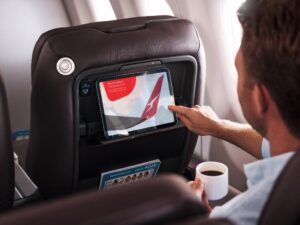
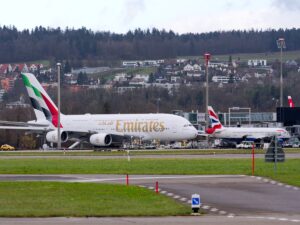


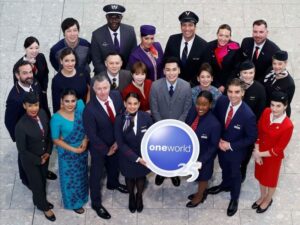





















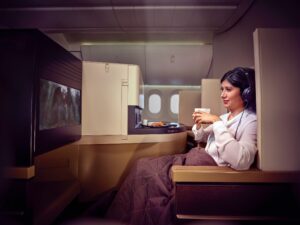












































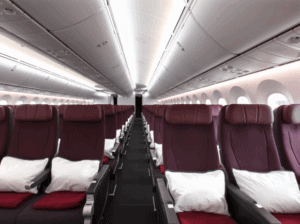





Community Comments
Loading new replies...
Join the full discussion at the Australian Frequent Flyer →